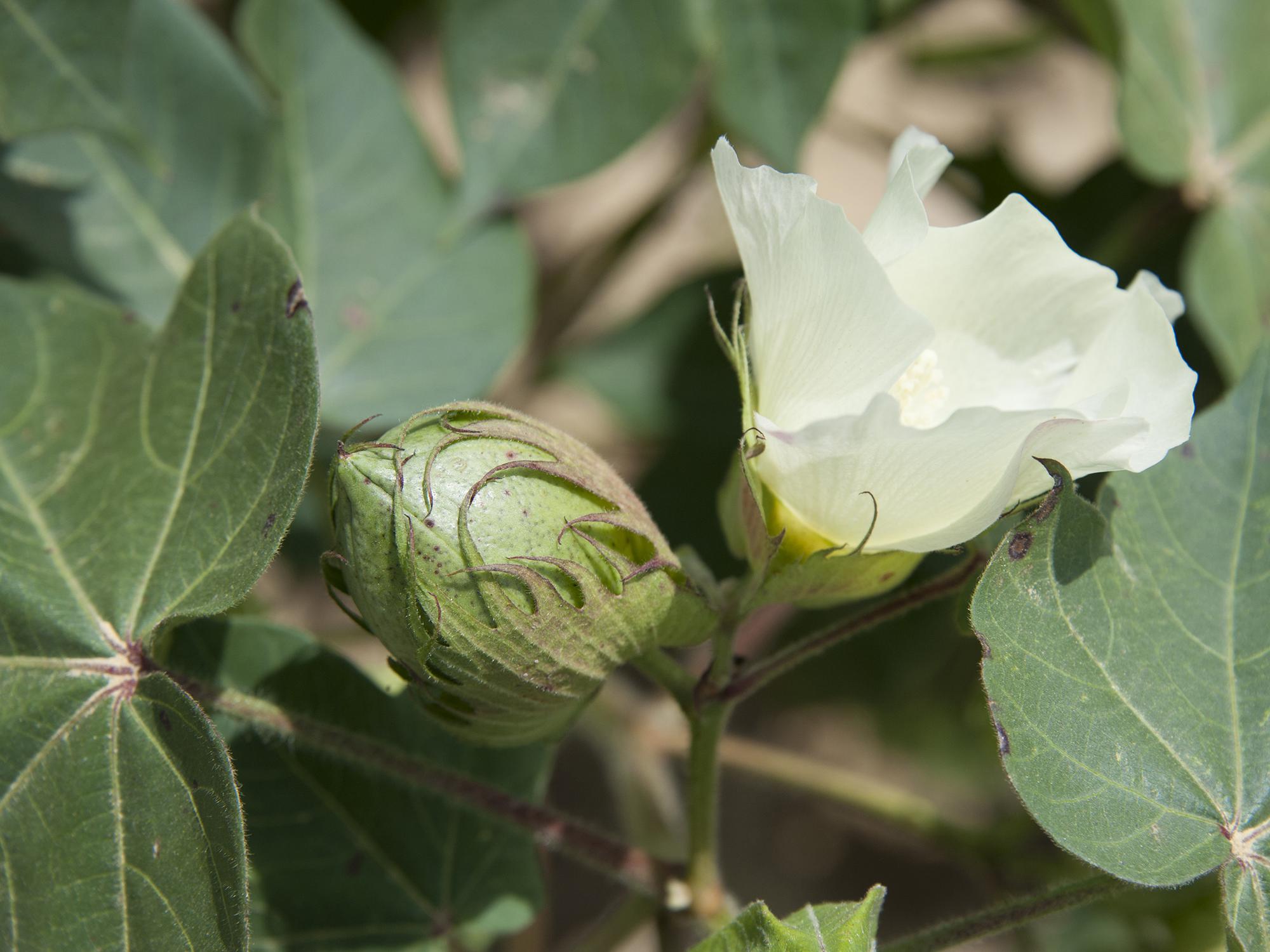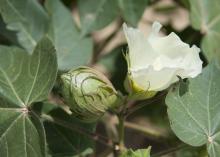Information Possibly Outdated
The information presented on this page was originally released on August 23, 2013. It may not be outdated, but please search our site for more current information. If you plan to quote or reference this information in a publication, please check with the Extension specialist or author before proceeding.
State's cotton remains late but looking good
MISSISSIPPI STATE – Mississippi’s cotton growers are hoping weather challenges don’t prevent their late-planted crop from making the good yields it seems capable of producing.
Darrin Dodds, state cotton specialist with the Mississippi State University Extension Service, said the bulk of the crop was in pretty decent shape by late August.
“Some folks feel they are sitting on one of the better crops they’ve had,” he said. “All that will boil down to the weather we have in the fall. We need a long, favorable fall, and the heat to stick with us and the rain to stay away.”
The Aug. 18 Crop Progress and Condition Report from the U.S. Department of Agriculture estimated 66 percent of the crop was in good to excellent condition. Only 7 percent was determined to be in very poor or poor condition.
“Our biggest challenge was getting the crop planted,” Dodds said.
By late August, usually 16 percent of the crop has open bolls. Dodds said he has seen some cotton bolls beginning to open near Rolling Fork in the south Delta and Macon in east Mississippi, but most of the state’s cotton still has two to three weeks before bolls open.
Late boll opening does not necessarily mean a poor crop.
“It typically takes 50 to 60 days from a white flower to a mature boll. Research has shown that the last effective date for a bloom in the state passed Aug. 22, which means cotton that flowers from here on out does not have a realistic chance of maturing into harvestable bolls,” Dodds said.
Cotton is a heat-loving plant, and early August offered many hot days where cotton plants accumulated the heat units needed to produce a crop. Temperatures dipped in the middle of the month, slowing cotton maturity.
“The weather warming up has certainly helped,” Dodds said. “We’re no longer falling behind on the number of heat units we should be accumulating on average each day.”
Charlie Stokes, Extension agent in Monroe County, said the biggest worry of cotton growers in east Mississippi is that they are running out of time.
“That’s the biggest challenge I see,” he said. “It’s a late crop, and growers are worried about cooler days and cloudy mornings without a lot of heat units, but there’s potential for a good crop if we have a warmer, drier fall.”
Stokes said the crop grew well after it was finally planted in late May or early June. Producers have had to use several applications of growth regulator to keep it in check.
“That usually means you have a pretty good crop,” Stokes said. “The cotton has set a good boll load, and it hasn’t had a lot of fruit shed.”
Thrips numbers in the Delta forced many growers to make additional insecticide sprays, but there have been no other significant problems with the crop beyond the late planting.
Dodds said when the poor yields of 2009 are taken out of consideration, the state’s cotton fields have yielded about two bales per acre on average for the past five years.
“I don’t see any reasons we won’t average that again this year if we get good fall weather,” he said.
Good yields could be matched by good prices this fall, if things continue to go well.
John Michael Riley, Extension agricultural economist, said the December futures price for cotton was 84 cents a pound on Aug. 22, above the contract’s final price last year of 72 cents a pound.
“A drop earlier this week was largely due to outside markets and rainfall in the southwestern U.S.,” he said. “Prior to this, prices were moving higher, topping out just over 93 cents on Aug. 16, following the most recent USDA supply and demand report, which showed an expected decline in U.S. production and projected smaller carry-over here in the U.S. and globally.”
Riley said the fact that the cotton crop was planted late and is maturing late has had little impact on cotton markets in recent weeks.
“Attention has turned to how the crop is doing in the fields,” he said. “The market is largely paying attention to drought conditions in west Texas, what China is doing with their reserves and what the general economy is doing.”




